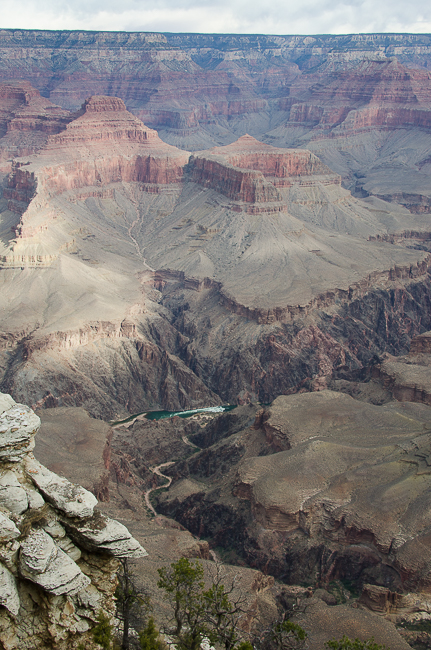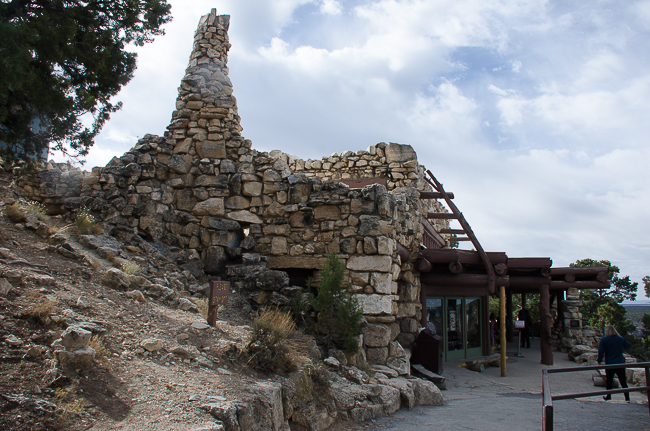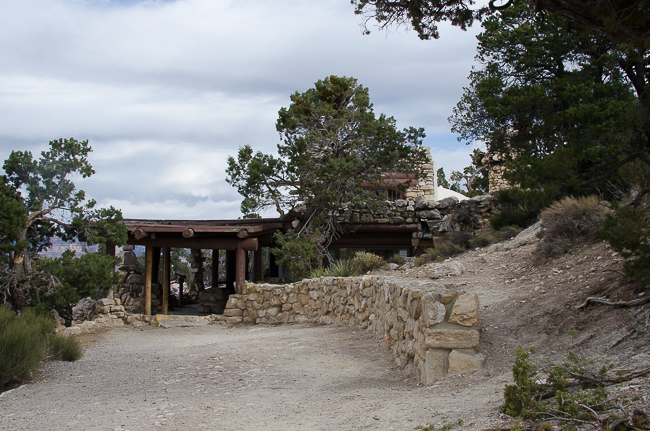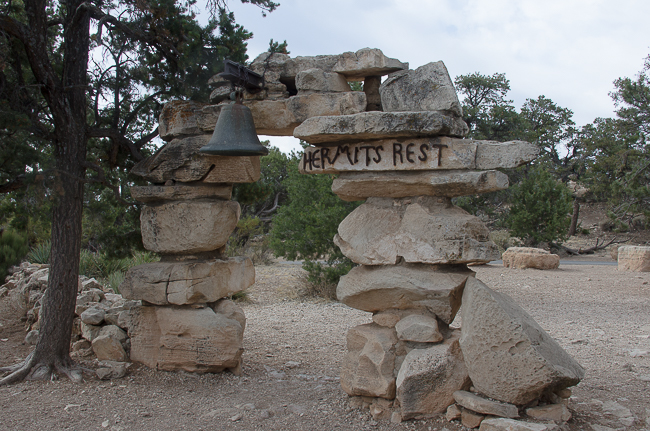Desert View Watchtower
The architecture of the ancestral Puebloan people of the Colorado Plateau served as Mary Colter’s model for the Watchtower. Patterned after those found at Hovenweep and the Round Tower of Mesa Verde, Colter indicated that it was not a copy of any that she had seen, but rather modeled from several.

The white decorative stones near the top that fade out as the eye goes around the tower, were from a pattern Colter had seen at Chaco Canyon and thought it would break the monotony of this Watchtower. The built-in cracks which are patterned from some of the ancient towers she had seen were a deliberate part of the design.
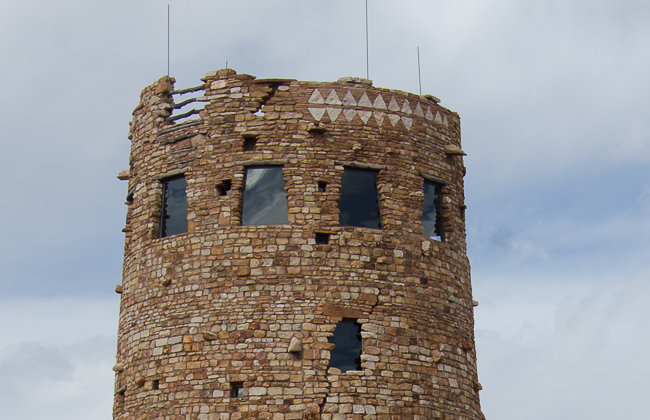 The tower is built over an internal steel framework designed by the bridge builders of the Santa Fe Railway company. Each exterior stone was selected and carefully placed to the exact specifications of Colter.
The tower is built over an internal steel framework designed by the bridge builders of the Santa Fe Railway company. Each exterior stone was selected and carefully placed to the exact specifications of Colter.
Shrine of the Ages

Shrine of the Ages
In1952 Harold E. Wagoner, a member of the board of directors of the Church Architectural Guild of America, was selected as architect for a non-denominational place of worship within the park. Designing with respect for the natural environment and Native American culture, Wagoner created a structure that reflected the architectural style of a kiva, a place of worship used by Native Americans in the Southwest.
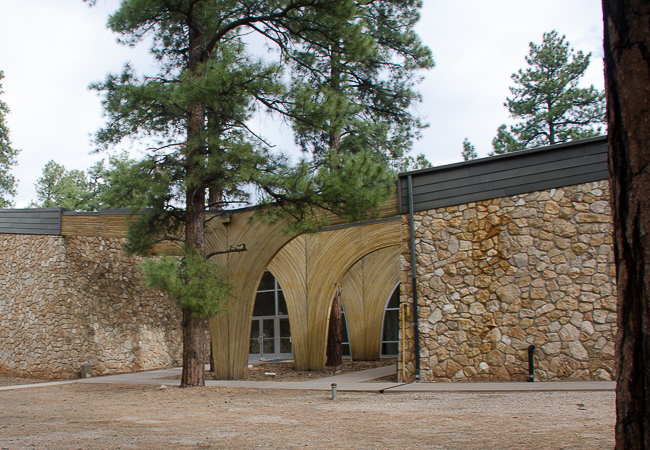
The Entry with its wood arches
This taphophile was so thrilled to look out on the horizon outside the Shrine of the Ages to see a cemetery. While I have seen cemeteries inside of National Parks (Yosemite for one), I did not expect to see a cemetery with recently interned.
The Grand Canyon Pioneer Cemetery

*
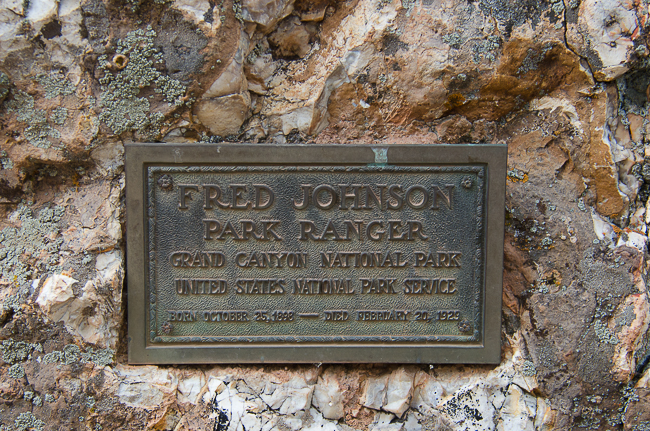 The cemetery goes back before the forming of the national park and was formally dedicated in 1928. It holds early Grand Canyon families and pioneers. While closed to burials as of 2007, it still accepts members of families already laid to rest in the cemetery. The cemetery presently has more than 390 individual graves.
The cemetery goes back before the forming of the national park and was formally dedicated in 1928. It holds early Grand Canyon families and pioneers. While closed to burials as of 2007, it still accepts members of families already laid to rest in the cemetery. The cemetery presently has more than 390 individual graves.
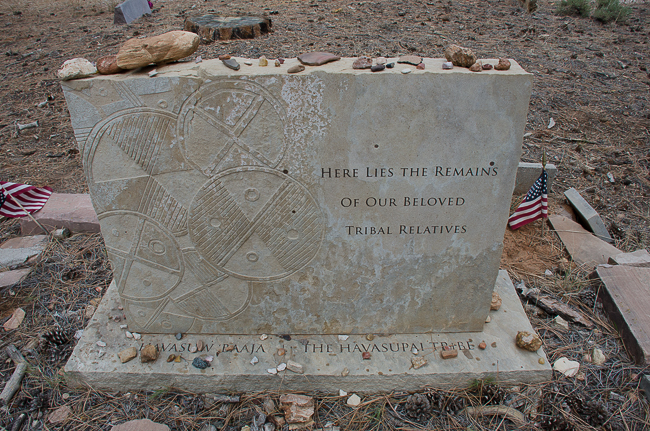
John Wesley Powell Memorial

The Powell Monument can be found at Powell Point on the Rim Road
In 1869 John Wesley Powell and his five-member crew were the first white people confirmed to have traveled through the entirety of the Grand Canyon. The men traveled down the Green and Colorado rivers for three-months on the first official US government-sponsored passage through the Grand Canyon
Throughout his life, Powell was a geologist, U.S. Soldier, explorer of the American West, professor at Illinois Wesleyan University, and director of major scientific and cultural institutions.
The Grand Canyon is a spectacular, immense, overwhelming place, sometimes it is nice to just take a day and concentrate on the human-sized sites.
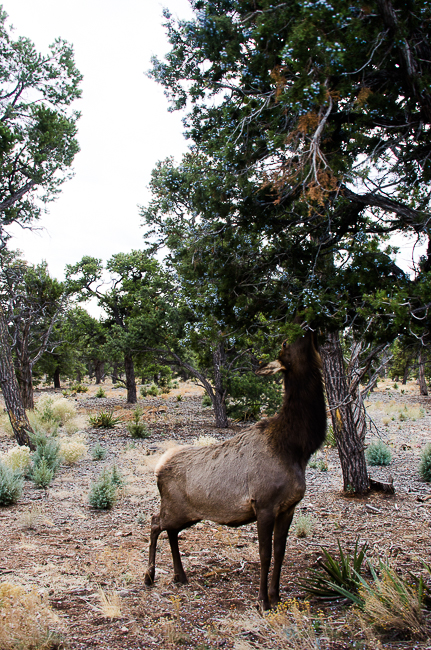
Elk feeding on Juniper berries

